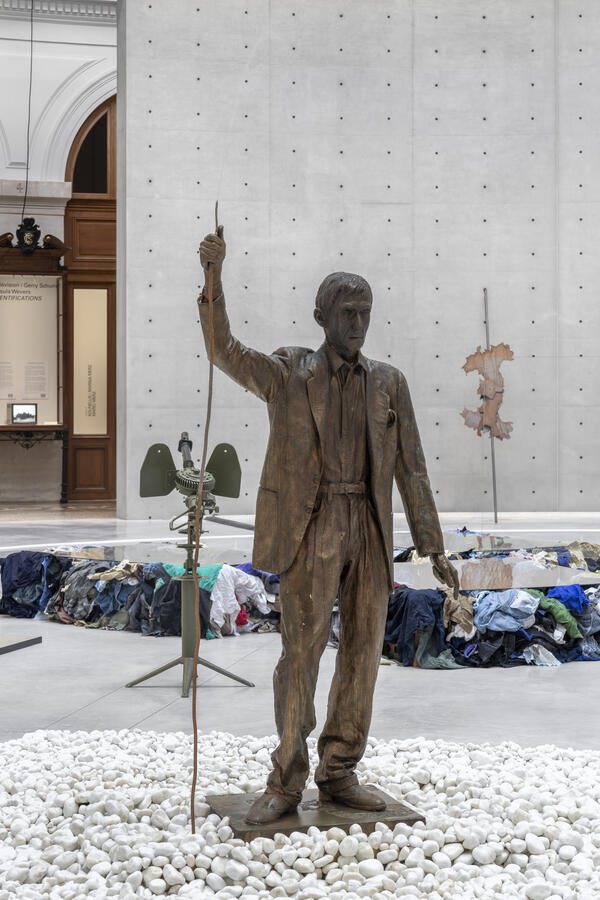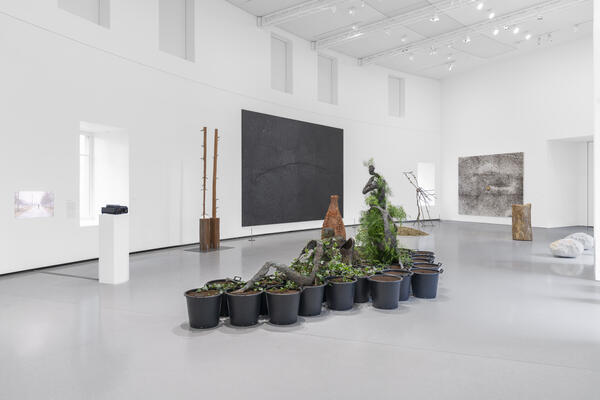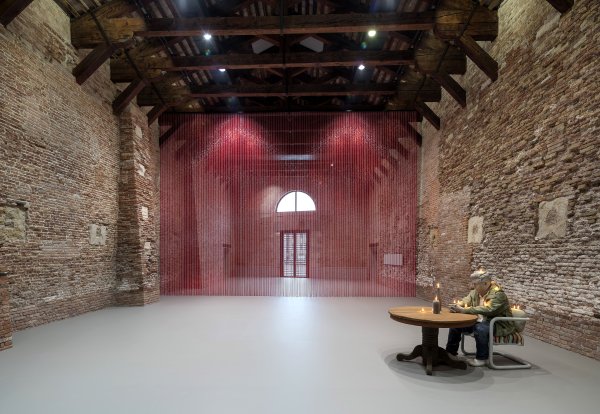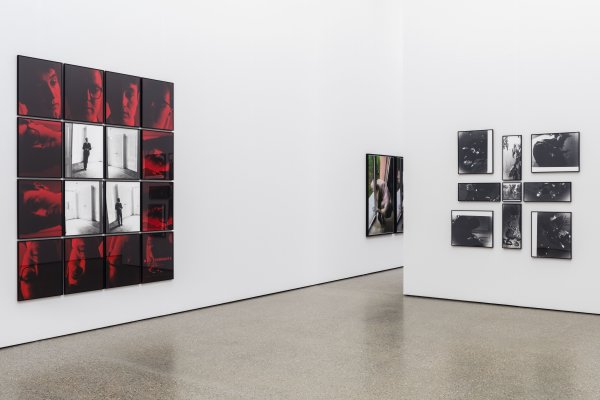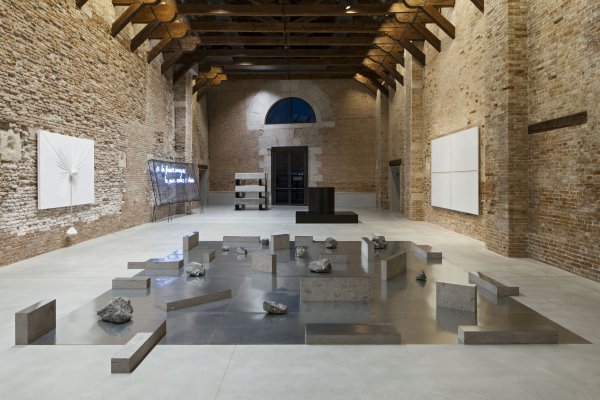Alighiero
Boetti
Alighiero
Boetti
Boetti
Italian, 1940 — 1994
Engaged and elusive, Alighiero Boetti’s work also reveals an obsession with the issue of doubles and duality. A painter, sculptor and conceptual artist, Boetti’s work bears witness to the difficult relationship between the creator and the world around them, but also the relationship between man and the artist.
The Italian artist quickly moved toward art, joining the Italian Arte Povera movement, a term coined by art critic Germano Celant in 1967, which challenged the formalist offerings of the dominant American groups of the time. Rejecting the mannerisms of a society doomed to consumerism, Arte Povera instead favours instinct, nature and ephemera. Boetti uses a wide range of “poor” materials in his work, notably ballpoint pens, postage stamps, and embroidery, to produce his maps series. His Autoritratto in the Pinault collection, is made from industrial materials. The self-portrait is a strong feature of Boetti’s work, and generally marked by the idea of duality, particularly in 1972, when the artist began to sign his work Alighiero and Boetti.
The artist’s work was first shown by the Pinault Collection at the "Le Monde vous appartient" (“The World Belongs to You”) exhibition (2011-2012) at the Palazzo Grassi.
The Italian artist quickly moved toward art, joining the Italian Arte Povera movement, a term coined by art critic Germano Celant in 1967, which challenged the formalist offerings of the dominant American groups of the time. Rejecting the mannerisms of a society doomed to consumerism, Arte Povera instead favours instinct, nature and ephemera. Boetti uses a wide range of “poor” materials in his work, notably ballpoint pens, postage stamps, and embroidery, to produce his maps series. His Autoritratto in the Pinault collection, is made from industrial materials. The self-portrait is a strong feature of Boetti’s work, and generally marked by the idea of duality, particularly in 1972, when the artist began to sign his work Alighiero and Boetti.
The artist’s work was first shown by the Pinault Collection at the "Le Monde vous appartient" (“The World Belongs to You”) exhibition (2011-2012) at the Palazzo Grassi.
